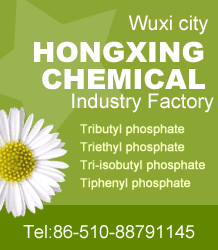Home > Offer to Sell > Pharmaceuticals and Biochemicals > Hormones and synthetic substitutes > Tranexamic acid CAS No.701-54-2
Tranexamic acid CAS No.701-54-2
Inquiry
| Post Date: | Mar 06,2018 |
| Expiry Date: | Mar 06,2019 |
| Detailed Description: |
Cas No. :1197-18-8;701-54-2
Quantity: 1Kilograms Specs:bodybuilding/ healthy care Price:1 USD Kilograms Payment Method: T/T Western union Moneygram CAS No.701-54-2 Chemical Name: Tranexamic acid Synonyms: Tranexamic acid;Tranexamic Acid(Random Configuration);4-(Aminomethyl)cyclohexanecarboxylic acid;4-(Aminomethyl)cyclohexanecarboxylic Acid (cis- and trans- mixture);4-(Aminomethyl)cyclohexanecarboxylic Acid (cis- and trans- mixture) CBNumber:CB2948513 Molecular Formula: C8H15NO2 Formula Weight: 157.21 Melting Point: >300 ° C(lit. ) Assay: 99-101% Appearance: White crystalline powder Medical Uses: 1.Trauma; Vaginal bleeding; Child birth 2.Surgery; Dentistry; Hematology Other Uses: 1.In hereditary angioedema 2.In hereditary hemorrhagic telangiectasia - Tranexamic acid has been shown to reduce frequency of epistaxis in patients suffering severe and frequent nosebleed episodes from hereditary hemorrhagic telangiectasia. 3.In melasma - tranexamic acid is sometimes used in skin whitening as a topical agent, injected into a lesion, or taken by mouth, both alone and as an adjunct to laser therapy; as of 2017 its safety seemed reasonable but its efficacy for this purpose was uncertain because there had been no large scale randomized controlled studies nor long term follow-up studies. Description: Tranexamic acid (TXA) is a medication used to treat or prevent excessive blood loss from major trauma, post partum bleeding, surgery, tooth removal, nose bleeds, and heavy menstruation.[1][2] It is also used for hereditary angioedema.[1][3] It is taken either by mouth or injection into a vein. Application: The development and fibrinolytic phenomena associated with the body heal under physiological or pathological state of fibrinolysis, increased vascular permeability, etc., but also on the body caused by reaction with fibrinolysis, a variety of symptoms and allergic reactions such as bleeding. This product can inhibit plasmin, and display bleeding, anti-allergic, anti-inflammatory effect. The role of an anti-plasmin in Tranexamic acid can be combined with the plasmin and plasminogen and fibrin affinity site lysine site (LBS) is strongly adsorbed by inhibition of plasmin, plasminogen and fibrin binding and thus strongly inhibit fibrin by plasmin-induced decomposition; Addition, in the presence of serum and other anti-plasmin macroglobulin, tranexamic acid antifibrinolytic effect is more obvious. |
| CAS Registry Number: | 1197-18-8;701-54-2 |
| Synonyms: | ;trans-4-Aminomethylcyclohexane-1-carboxylate; trans-4-(Aminomethyl)cyclohexanecarboxylic acid; Amstat;amcha;trans-cyclohexanecarboxylic acid;4-(aminomethyl)cyclohexanecarboxylic acid;trans-4-(aminomethyl)cyclohexanecarboxylic acid; |
| Molecular Formula: | C8H15NO2 |
| Molecular Weight: | 157.2102 |
| Molecular Structure: | 
|
| Hazard Symbols: |  Xi:Irritant; Xi:Irritant; |
| Risk Codes: | R36/37/38:; |
| Safety Description: | S26:; S37/39:; |
| Company: | Wuhan Hezhong Bio-Chemical Manufature Co.,Ltd [ China ] |
| Contact: | Laura |
| Tel: | 18872220713 |
| Fax: | 86-27-88048077 |
| Email: | uoyyphar@ycphar.com |
-
Disclaimer statement:The information and data included above have been realized by the enterprises and compiled by the staff, and are subject to change without notice to you. The Chemnet makes no warranties or representations whatsoever regarding the facticity, accuracy and validity of such information and data. In order to ensure your interest, we suggest you chose the products posted by our gold suppliers or VIP members.


